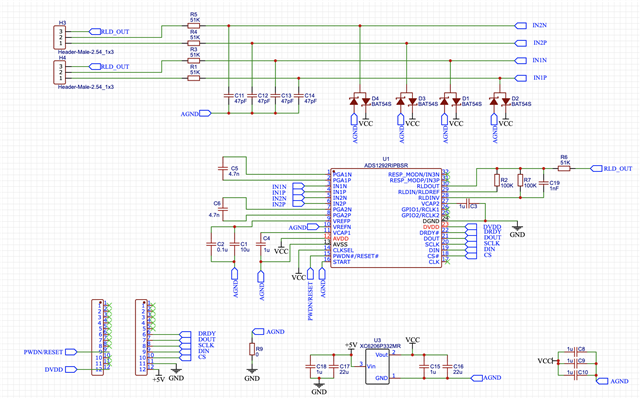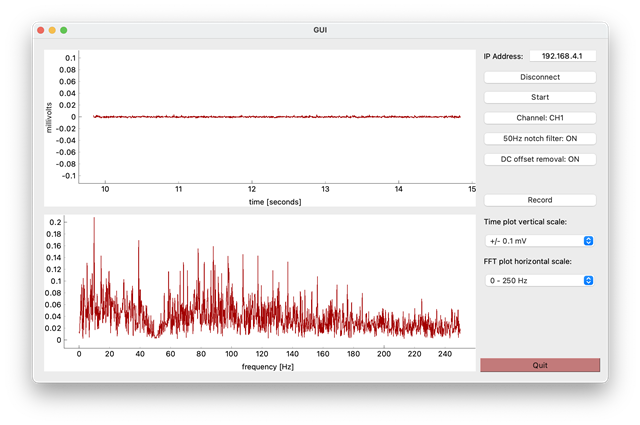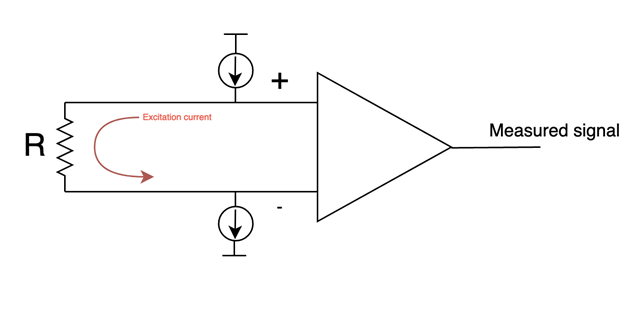Other Parts Discussed in Thread: ADS1292
Hi,
I'm trying to configure AC lead-off detection for my ADS1292R circuit prototype. I do not seem to see the effects of the AC current source in the measured signal. Here is the schematic:

I have enabled the AC excitation voltage and externally shorted the inputs positive and negative for Channel 1. I've configured the samping frequency to be 500 SPS, so I expect the AC excitation frequency to be 500 / 4 = 125 Hz. There are 51 KOhm series resistors in the input path as part of the anti-aliasing filter and I have configured the excitation voltage to be the max (22 uA), so I expect to measure a relatively large 125 Hz AC voltage at the channel 1 input, which should manifest as a large spike in the FFT plot. But I do not see this (note that a 1Hz highpass filter and 50Hz notch filter have been applied in software to these plots):

I'm hoping that it's just something I'm doing wrong in the configuration. The microcontroller sets the following register values before starting the continuous read mode:
CONFIG1 = 0x02
CONFIG2 = 0xE3
LOFF = 0x1D
LOFF_SENS = 0xF
CH1SET = 0x60
CH2SET = 0x60
RDL_SENS = 0x23
I have tested this setup by measuring ECG and EMG, and I have also managed to get the 1Hz test signal to work.
Is there something I'm doing wrong?
Thanks,
Matt



